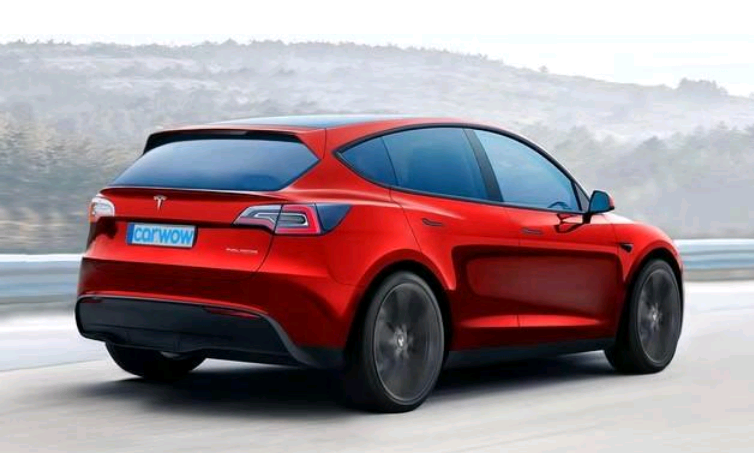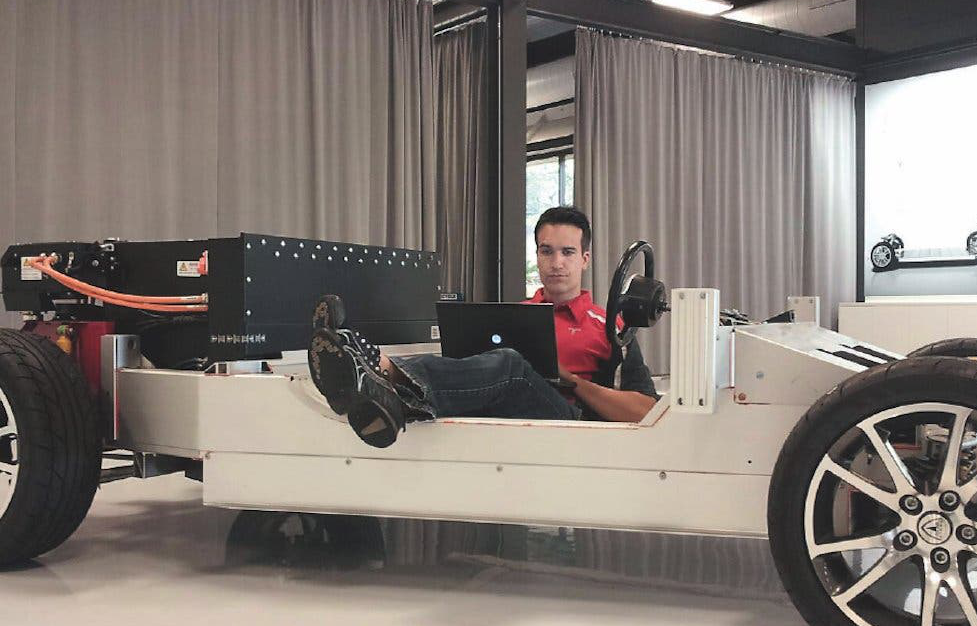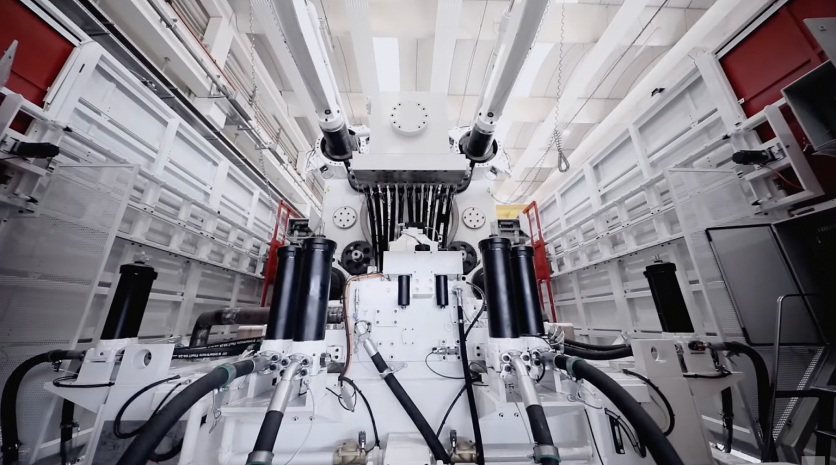Author: Liu Hong
Introduction
As early as mid-2020, the news that Tesla would launch a brand new model called Model 2 priced at $150,000 was spread around, making it $1,000 cheaper than Model 3! In the past two days, Tesla’s CEO Elon Musk has been discussing the naming of the new car on social media, which seems to indicate that it’s coming soon!
Guess 1: Not calling it “2”
In August 2020, Musk said at an investor conference: “Our mission is to make cars affordable for people. The biggest problem now is that our cars are still not cheap enough, and we need to solve this problem.”
At Tesla Battery Day in September 2020, Musk once again stated that he would launch an electric car priced at $25,000. The project has already started, and Model 2 is expected to begin road testing as early as this year. It is said that the Model 2 will be produced directly at the Shanghai Tesla Super Factory, skipping the step of importing from overseas and “cutting leeks”, while production in Europe will be in Berlin, Germany.
From the rendering of Tesla Model 2, the new car belongs to a two-door hatchback model, which still has a closed front face, continues the hidden door handles, and has familiar taillights. The two-door version looks more like a smaller version of Model Y, with a body size close to that of a Volkswagen Golf, and a range of more than 450 kilometers is expected.

Regarding the name of Model 2, Musk said directly on social media: the new car will not be named Model 2. In fact, the origin of Model 2 is closely related to Chinese netizens because “二” (èr) is often used to mean “inferior” or “second-rate”. Since Musk has explicitly stated that the new model will be smaller than Model 3 and cheaper, it is naturally named “2” by netizens.
Since Musk confirmed that the new car will not be called “2”, netizens have been guessing: Tesla’s existing model series consists of four models, namely Model S, 3, X, and Y, which can be combined into “S3XY”; other models include Cybertruck, ATV, Roadster, and Semi, with the first letter combined to become “CARS”. Isn’t it all “SEXY CARS”? So what should Model 2 be called? Do you have any ideas?
Guess 2: Model 2 series needs a platformMaarten Vinkhuyzen, a dedicated Tesla columnist for CleanTechnica, questions the necessity of Tesla developing a platform for its Model 2 series (let’s call it Model 2 for now), saying that it is not yet time.

After going through the production hell of Tesla Model 3, Musk stated that the technology for producing this more affordable model will be ready around 2022-2023, not as soon as sensationalized by the media. Producing a micro electric vehicle like SGMW (SAIC-GM-Wuling), which sells for around 5,000 US dollars in China and less than 17,000 euros in the EU, is one thing, while for Tesla, which must comply with the “Tesla standards,” it is another. After all, there are so-called Tesla standards:
-
Must be the safest vehicle in its class (that is the standard, but the reality may differ);
-
Must have a good speed;
-
Must be a pleasure to drive a Tesla car;
-
The model must look good (it is difficult to distinguish between different Tesla models, in other words, they lack distinct features), at least in Musk’s eyes;
-
Must have sufficient driving range.
At the beginning of the new year, Wuling Hongguang MINI EV Macaron sells for only 37,600 yuan, equivalent to about 5,700 US dollars. Since Model 2 will be several times more expensive than that, would its performance be equally impressive?
Musk also mentioned that Tesla will follow the China and Europe localization models. Therefore, many Tesla observers say, “the 25,000 US dollar model and the localized model will be one and the same. Therefore, it must be called Model 2 – Tesla’s two modes of operation in China and Europe.”
In China, Model 2 must compete with Nissan Sylphy and Volkswagen Bora, while in Europe, it must compete with Volkswagen Golf and ID. In the $20,000 to $30,000 market, an American car must be better than Toyota and Honda’s top-selling models. It’s challenging!
These are three entirely different cars, but their size, price, comfort, and performance are the same. In the past year or more, the Tesla design center in Los Angeles has had no news about Model 2. It has made some improvements to the Cybertruck and Semi, but it is challenging to call it full-time development. Moreover, Tesla has just opened new design centers in Shanghai and Berlin last year for localized car models, which are two different original models suitable for the local market.Vinkhuyzen stated: “The typical development time for a new vehicle design is about 7 years, while fast development requires around 5 years. However, at Tesla, Musk slept on the floor for at least 3 years. To bring Model 2 to market within the time frame mentioned a few years ago, Tesla’s design must proceed smoothly. The only way for these design teams to match the commitment of the local teams developing original models for their market is to have a platform they can use.”
Years ago, Carlos Ghosn, former CEO of Nissan Motor who was detained for suspected financial misconduct and unexpectedly left the company, gave a speech on the future of automotive development and production. He presented a platform similar to a skateboard. He said that different brands could build their own vehicles on this basis.

“The local design teams will be covered with an external and internal layer of ‘skin’ to optimize the local market. They can visually create new vehicles as needed. In this way, the Renault-Nissan-Mitsubishi Alliance can maintain different identities for its brands, but share the expensive development and production costs of automotive parts. Volkswagen’s platforms, brands, and models all practice this design concept to some extent,” Ghosn said.
Vinkhuyzen said, “I speculate that Tesla is developing a product similar to Volkswagen’s MEB (Modularer E-Antriebs-Baukasten) for localized Model 2 vehicles. Only in this way can the new design team in Berlin and China produce localized models in about a year and begin production within two years.”
The Model 2 series platform will have front casting, rear casting, and structural batteries. There may be multiple versions of front and rear castings for single motor (front or rear), dual motor, and performance models.
Its structural battery may have different lengths and different battery chemistry. Other components will include a set of motors, suspensions, brakes, power electronics, seats, HVAC, etc. The same set of components can also be used for medium-duty trucks.
Tesla’s lineup urgently needs more changes. The Model 2 series platform can be used to produce the required variety without complicating production.Vinkhuyzen believes that BEVs (battery electric vehicles) market needs these types of vehicles more than Tesla does. Traditional car manufacturers are producing limited availability BEVs and more powerful PHEVs (plug-in hybrid electric vehicles). This is understandable from their perspective but is very wrong for the transition of car revolution.
Hypothesis three: Where Is the Innovation?
It is speculated that the Model 2 will have slightly lower performance than the Model 3 and will not feature the radical 3.4-second 0-100 km/h acceleration. However, it is expected to come fully equipped with FSD (Full Self Driving) and will not be lacking in technological features.
Thanks to the progress in battery technology, and the smaller and lighter body, the Model 2 will have a range that is not lower than the current Model 3, and even the long-range version will be able to achieve 500 miles (805 km).
So how does Tesla achieve all this at such a low price? The answer is innovation.
Not long ago, Tesla announced that the rear floor of the Model Y would use large aluminum castings that can be formed in one piece. The number of cast parts will be reduced from 70 to 4 and eventually to one. This one part is likely to be realized in the Model 2.
At Battery Day in September of last year, Musk stated that Tesla had developed a new chassis structure, the main body of which is composed of a single-pressed car body of the front and rear parts, and an integrated chassis battery pack. This structure can reduce 370 components, while improving range by 14% at a 10% weight reduction. Tesla’s ultimate goal for the single-pressed car body is to make every car and part be assembled as precisely as Lego bricks.
The key to achieving this goal is Tesla’s car-making artifact — the world’s largest 8,000-ton Giga Press. It is said that the new Model S/X will also begin to use single-pressed car bodies.
In September 2020, documents submitted by Tesla to the Berlin Gigafactory showed interesting details about the factory to be built. According to these documents, the factory is preparing to equip itself with eight Giga Press machines on-site, indicating that Tesla is exploring the launch of single-piece castings similar to the Model Y.

This indicates that the Berlin factory is expected to achieve the latest innovation in the production of pure electric crossover vehicles from the start of Model Y production, including the use of large castings in the rear of the Model Y, which will be further optimized over time. Musk said: “Ultimately, a single-piece rear body will be achieved, including the bumper.”From the number of Giga Press machines in Berlin, it seems that the Model Y won’t be the only model manufactured on-site using single-piece casting. It is worth noting that using large castings to produce vehicles is a way to optimize costs and production time. Therefore, if Tesla can master Giga Press, it is highly likely that they will develop a strategy for manufacturing low-cost cars that can sustain profitability.
If Tesla wants to produce a smaller, more affordable car, it can vie for the European market against popular electric cars like the Renault Zoe (which is considered a Model 2 competitor in the Tesla community). Developing a production line that optimizes cost and manufacturing output would definitely have strategic significance.
Speculation Four: Who Will Tremble at the Arrival of the Model 2?
If the Model 2 is released soon, it would be like Tesla being both Apple and Xiaomi in the car industry. It is conceivable that Tesla’s market share will be even higher than Apple’s share in the smartphone market because Apple has always maintained a mid-to-high-end price point with a significant price gap compared to domestic phone makers.
Analyzing the current market for electric vehicles, it is clear that Tesla has many fans, and its sales in China have been good, but it still cannot surpass the Hongguang MINI EV. However, as previously mentioned, the price difference between these two is not insignificant, and Tesla’s affordable route with a double package Model 2 could even impact companies like BYD and XPeng.
Imagine the impact a Tesla priced at just over 150,000 yuan would have on the market in second-, third-, and fourth-tier Chinese cities. Of course, the prerequisite is that Tesla’s stores should open in more middle and small cities.
If the Model 3 achieves 100% localization and has a stable and reliable supplier system, there is no difficulty in extending to the Model 2. The Model 2 will come sooner or later, and are the incumbent manufacturers ready to shake in their boots?
Tesla is still a young company. Over the years, this electric carmaker has evolved from a niche brand that produced high-speed sports cars (Roadster) to a mainstream automaker that produces family crossovers. However, Tesla has not yet mastered the key to mass-producing profitable, low-cost cars. Based on market capitalization, automakers like Toyota have already been dethroned by Tesla, which has become the most valuable automaker in the world. However, vehicles with low price and broad appeal like the Toyota Yaris are still profitable, and this is something that Tesla needs to learn.
This article is a translation by ChatGPT of a Chinese report from 42HOW. If you have any questions about it, please email bd@42how.com.